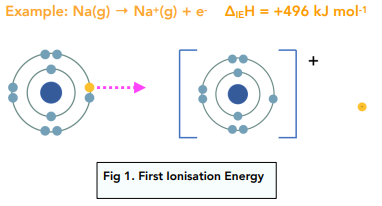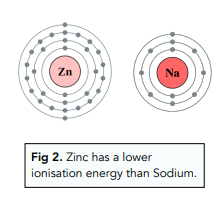Thermodynamic - Enthalpy Key Terms (A-Level Chemistry)
Enthalpy Key Terms
Enthalpy Key Terms
Enthalpy Changes
Enthalpy change is the change in heat energy of a substance at constant pressure. The symbol for enthalpy change is ΔH. If the enthalpy change is measured under standard conditions of temperature and pressure e say it is a standard enthalpy change and the symbol for it is ΔH°.
Enthalpy of formation, ΔfH is the enthalpy change when one mole of compound is formed from its constituent elements in their standard states under standard conditions (298K and 100 kPa).

Enthalpy of combustion, ΔcH is the enthalpy change when one mole of substance in its standard state is burnt in excess oxygen under standard conditions.

Enthalpy of atomisation, ΔatH is the enthalpy change when one mole of gaseous atoms is formed from the element in its standard state, under standard conditions.

Mean bond enthalpy is the enthalpy change when a covalent bond in one mole of gaseous molecules breaks to give two gaseous atoms (or free radicals). It is also known as bond dissociation enthalpy and the atoms formed are known as free radicals.

The bond enthalpy is a mean value, as it is measured over a range of different covalent molecules. This is because the value of the bond energy depends on the molecule the bond energy is measured in.
Ion Formation
First Ionisation Energy, ΔIEH is the enthalpy change when one mole of electrons is removed from one mole of gaseous atoms to form one mole of gaseous ions with a single positive charge.

First electron affinity, ΔEAH is the enthalpy change when one mole of gaseous atoms gains one mole of electrons to form into one mole of gaseous negative ions.

The first electron affinity is exothermic for atoms that normally form negative ions because the ion is more stable than the atom.
The second electron affinity is endothermic because energy is needed to overcome the repulsive forces between the negative ion and the electron being added.
Ionisation energies and electron affinities depend on:
- Charge – The more positive the nucleus of an atom, the more strongly electrons will be attracted to it so the easier they will be added but the more difficult to remove. The effects of ionic charge are the same.
- Atomic Radius – The greater the atomic radius, the further away from the nucleus electrons will be so the weaker the attraction between them. Therefore, the more difficult it is for electrons to be added but the easier it is for them to be removed.
- Number of inner shells – The greater the number of electron shells between the atomic nucleus and the outer electrons, the greater the shielding effect so the weaker the attraction. Therefore, the more difficult it is for electrons to be added but the easier it is for them to be removed.

Enthalpy is a measure of heat content in a thermodynamic system. It represents the total energy of a system, including both the internal energy and the energy associated with its pressure and volume.
In A-Level Chemistry, enthalpy is important because it helps us to understand and predict the heat energy changes that occur during chemical reactions and physical processes. Understanding enthalpy is key to understanding many fundamental chemical and physical concepts, such as bond formation and the laws of thermodynamics.
Internal energy is a measure of the energy of a system due to the motion and interactions of its particles. Enthalpy takes into account not only the internal energy, but also the energy associated with changes in pressure and volume.
The enthalpy of formation is the amount of heat energy required to form one mole of a substance from its constituent elements in their standard states.
The standard enthalpy of reaction is the amount of heat energy released or absorbed when one mole of a substance is formed or consumed during a chemical reaction, under standard conditions of temperature and pressure.
By measuring the enthalpy changes that occur during a reaction, it is possible to calculate the heat of reaction, which is the amount of heat absorbed or released during the reaction.
Yes, enthalpy can be used to predict whether a reaction will be exothermic or endothermic. If the enthalpy change during a reaction is negative, the reaction is exothermic and releases heat energy. If the enthalpy change is positive, the reaction is endothermic and absorbs heat energy.
In enthalpy calculations, the standard state is defined as a specific set of conditions, including temperature, pressure, and concentration, under which the enthalpy of a substance is measured.
The enthalpy of a system can change with temperature and pressure, as changes in these variables can affect the internal energy and the energy associated with pressure and volume.






Still got a question? Leave a comment
Leave a comment